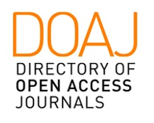Bruno Latour and Peculiar Structure of the First Scientific Revolution
DOI:
https://doi.org/10.24117/2526-2270.2023.i14.01Keywords:
Latour, Scientific revolution, Structure, Social facets, Aristotle, Ptolemy, Monotheistic Weltanschauung, Copernicus, Galileo, NewtonAbstract
Bruno Latour’s distinctive historiographic standpoint on the origins of scientific revolutions and the multifarious accounts of their reconstructions are elicited. It is contended that, in spite of their highly iconoclastic character, Latour’s views can be welcomed for their innovative approach to the inquiries of social facets of science. In particular, they can elucidate the foundations of the lucid mature theory change model proffered in our preceding writings. Correspondingly, the Copernican Revolution is envisaged in the wayward context of intense interaction and interpenetration of Aristotelean and Ptolemaic sophisticated research practices. Eventually, the Aristotle – Ptolemy pagan cosmology could not help but be exposed to repeated cogent attacks during the Middle Ages since it apparently confronted the renowned principles of monotheism, not admitting the impervious demarcation line between the celestial and mundane realms. All the opposite worlds should have one and the same Creator. Commencing with the unification, Copernicus, in effect, paved the way for the descent of mathematics from Heaven to Earth and the spread of natural philosophy from Earth to Heaven.
Downloads
Published
Issue
Section
License
Copyright (c) 2023 Tanzilia A. Burganova, Rinat Nugayev

This work is licensed under a Creative Commons Attribution 4.0 International License.











